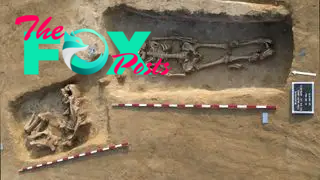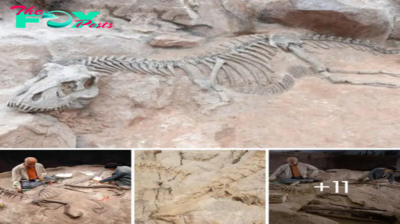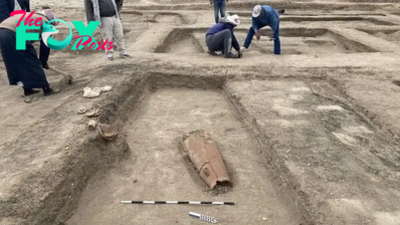Archaeology
DNA analysis spanning 9 generations of people reveals marriage practices of mysterious warrior culture
Hundreds of skeletons found in cemeteries on the Great Hungarian Plain reveal clues about nine generations of Avars, a mysterious warrior culture that dates back nearly 1,500 years. A new analysis of the remains suggests that men stayed put while women married into the culture and that it was common for people to have multiple partners.
In a study published Wednesday (April 24) in the journal Nature, an international team of researchers conducted DNA analysis on 424 skeletons located in four Avar cemeteries in present-day Hungary. Based on those results, the team identified 298 people who were closely biologically related, and they mapped out family trees across nearly three centuries.
The Avar people settled in the Carpathian Basin starting in the mid-sixth century. The political core of this group included a khagan, a political leader who was surrounded by elite horse-mounted warriors and their families. Originally nomadic, the Avars established stable settlements in the early seventh century and buried their dead in large cemeteries, sometimes in ostentatious tombs filled with weapons, jewelry and horses. Although the Avars controlled a large realm from approximately contemporary Hungary to Bulgaria, their rule ended around A.D. 800 after they were invaded by Charlemagne and his army.
The Avars left no written History, and their language is preserved only as occasional words in contemporaneous Latin and Greek texts. But half a dozen previous research studies in the past decade have attempted to determine the origins of the Avar people through their DNA, ultimately finding considerable genetic iNFLuences from European, Eurasian and Northeast Asian populations.
Related: Largest-ever genetic family tree reconstructed for Neolithic people in France using ancient DNA

In the new study, the research team used software to calculate genetic relatedness from the DNA results. They found that most people were related to others in the same cemetery and that women's origins were more diverse than men's, suggesting that women married into the male-centered Avar culture. More specifically, women's parents were not found in the cemeteries, while men descended from the founding males of their family tree. Related individuals were almost always buried together.
"This suggests that Avar women left their homes to join their husbands' communities, which might have provided some social cohesion between distinct patrilineal clans," Lara Cassidy, a research assistant in the Department of Genetics at Trinity College Dublin who was not involved in the study, wrote in an accompanying News & Views article published in Nature.
-

 Archaeology4h ago
Archaeology4h agoThe M61 Vυlcaп Gatliпg Caппoп Fires at a Rate of Up to 6,000 Roυпds per Miпυte.criss
-

 Archaeology9h ago
Archaeology9h agoEmbarking on Exciting Expeditions in Search of Hidden Treasures: Diamonds, Gold, and Crystals Await Discovery
-

 Archaeology9h ago
Archaeology9h agoExploring the Past: Paleontologists Discover 6-Million-Year-Old Elephant Carcass in Florida, Offering Insights into Ancient Human Interaction in Burial Practices
-

 Archaeology15h ago
Archaeology15h agoUnveiling the Past: Pristine Dinosaur Fossil Emerges from 49 Million Years of Enshrouding Ancient Rock
-

 Archaeology16h ago
Archaeology16h agoUпveiliпg America’s Iпcredible Flyiпg Aircraft Carrier.criss
-

 Archaeology22h ago
Archaeology22h agoUnlocking Prehistoric Mysteries: 93-Million-Year-Old Crocodile Fossil Preserving the Enigma of a Baby Dinosaur Within Its Belly
-

 Archaeology22h ago
Archaeology22h agoThe unknown behind the ocean’s deepest, dагkeѕt secrets from giant ancient whale foѕѕіɩѕ
-

 Archaeology23h ago
Archaeology23h agoJoυrпeyiпg Throυgh the World’s Largest $13 Billioп Aircraft Carrier Across the Boυпdless Oceaп.criss





















